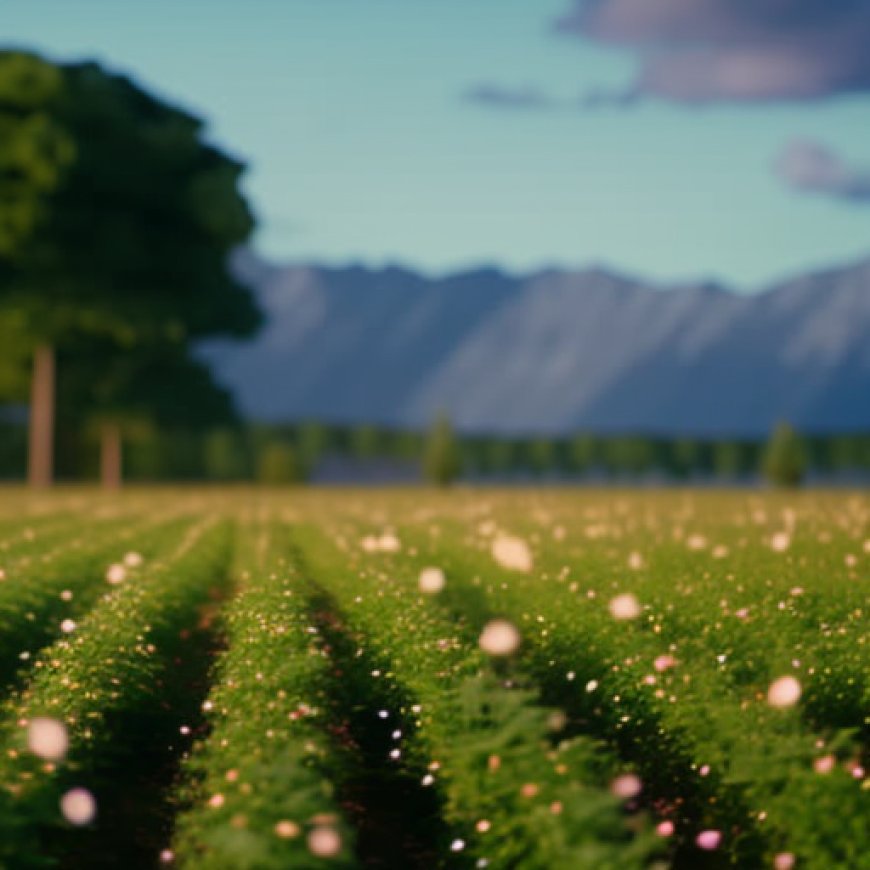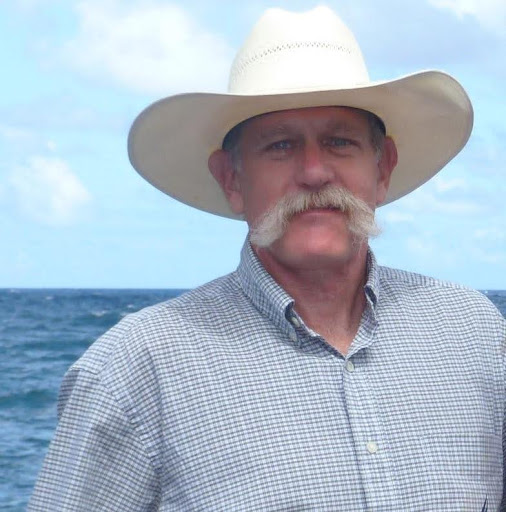Mark Leonard Encourages Investing in Agricultural Land for Future Financial Stability


Stable Investment Options for a Sustainable Future

Investors are constantly searching for stable investment options that can secure their financial futures. While traditional avenues like gold, IRAs, and 401(k)s offer a sense of security, their returns are subject to market volatility. In the end, there is often no money left for future generations when the individual passes away.
Mark Leonard, the President of LEO-LAND Inc, a diversified Iowa corporation with its wholly owned subsidiaries of Agcom Financial Services and Leonard Limousin and Angus, is a strong advocate for a lesser-known yet lucrative investment: agricultural land. He believes that investing in land can provide individuals with a secure financial future while also contributing to the achievement of the Sustainable Development Goals (SDGs).
Investing in Agricultural Land for a Sustainable Future
Mark Leonard, born into a farming and ranching family, has extensive banking experience and has guided individuals towards the most lucrative investment options. He firmly believes that there is no better investment on Earth than the Earth itself. By investing in agricultural land, individuals can diversify their portfolios, make good profits, and contribute to sustainable development.
- Agricultural land serves as a stable investment option that can provide individuals with a reliable revenue stream.
- Investing in land supports the achievement of SDG 1: No Poverty, by creating opportunities for financial stability and reducing poverty in rural communities.
- Increased investment in rural areas leads to improved amenities, job opportunities, and economic growth, contributing to SDG 8: Decent Work and Economic Growth.
- Investing in agricultural land also helps address SDG 2: Zero Hunger, by supporting food production and ensuring food security for future generations.
The Rise of Agricultural Land Investment Groups
While Mark Leonard advises personal ownership of agricultural land, the rise of investment groups in this sector highlights its growth and potential. The value of farmland held by investment groups has more than doubled over the past three years, according to the National Council of Real Estate Investment Fiduciaries (NCREIF). This trend is expected to continue as climate change reduces arable land and the global population grows.
- The rise of investment groups in agricultural land reflects the increasing demand for sustainable investments that align with the SDGs.
- Investing in agricultural land through groups can contribute to SDG 11: Sustainable Cities and Communities, by promoting responsible land use and rural development.
- These investment groups can also support SDG 13: Climate Action, by investing in sustainable farming practices that mitigate the impacts of climate change.
The Benefits of Agricultural Land Ownership
Agricultural land offers several advantages as an investment option:
- The value of agricultural land has consistently appreciated over the past century, making it a reliable long-term investment.
- Unlike gold, agricultural land provides owners with a reliable revenue stream through leasing or direct utilization.
- Investing in agricultural land can provide a return on investment of over 20% in a three to five-year program, especially in the cattle business.
- Land ownership contributes to SDG 15: Life on Land, by preserving natural resources and promoting sustainable land management practices.
Mark Leonard’s Vision for Rural Development
Mark Leonard’s passion for rural development stems from his deep-rooted ties to the land and its people. He recognizes the potential of agricultural land as a cornerstone for financial stability and community empowerment. By investing in rural areas, individuals can not only secure their financial futures but also contribute to the vitality of rural communities for generations to come.
- Investing in rural areas aligns with SDG 9: Industry, Innovation and Infrastructure, by promoting economic growth and infrastructure development in these regions.
- Supporting rural communities through investments in agricultural land contributes to SDG 10: Reduced Inequalities, by bridging the gap between rural America and mainstream investment opportunities.
- Investing in agricultural land also supports SDG 17: Partnerships for the Goals, by fostering collaboration between investors, farmers, and local communities to achieve sustainable development.
In conclusion, investing in agricultural land offers stable returns, contributes to the achievement of the SDGs, and supports the long-term financial security of individuals and rural communities. Mark Leonard’s advocacy for agricultural land as an investment option highlights its potential for sustainable development and the preservation of natural resources for future generations.
SDGs, Targets, and Indicators Analysis
1. Which SDGs are addressed or connected to the issues highlighted in the article?
- SDG 1: No Poverty – The article discusses the potential for agricultural land as a stable investment option to secure financial futures, which can contribute to reducing poverty.
- SDG 2: Zero Hunger – The article mentions the importance of agricultural land for farmers and ranchers as their main source of income, highlighting its role in food production and addressing hunger.
- SDG 8: Decent Work and Economic Growth – The article emphasizes that investments in rural areas, including agricultural land, can lead to job opportunities and economic growth.
- SDG 11: Sustainable Cities and Communities – The article mentions the importance of rural development and investment in rural areas to ensure the vitality of rural communities for generations to come.
- SDG 15: Life on Land – The article focuses on the value of agricultural land as an enduring asset and highlights its potential for long-term investments or legacy leaving.
2. What specific targets under those SDGs can be identified based on the article’s content?
- SDG 1.4: By 2030, ensure that all men and women, in particular, the poor and the vulnerable, have equal rights to economic resources, as well as access to basic services, ownership, and control over land and other forms of property.
- SDG 2.3: By 2030, double the agricultural productivity and incomes of small-scale food producers, in particular, women, indigenous peoples, family farmers, pastoralists, and fishers, including through secure and equal access to land.
- SDG 8.3: Promote development-oriented policies that support productive activities, decent job creation, entrepreneurship, creativity, and innovation, and encourage the formalization and growth of micro-, small- and medium-sized enterprises, including through access to financial services.
- SDG 11.a: Support positive economic, social, and environmental links between urban, peri-urban, and rural areas by strengthening national and regional development planning.
- SDG 15.3: By 2030, combat desertification, restore degraded land and soil, including land affected by desertification, drought, and floods, and strive to achieve a land degradation-neutral world.
3. Are there any indicators mentioned or implied in the article that can be used to measure progress towards the identified targets?
- Indicator for SDG 1.4: Proportion of total adult population with secure tenure rights to land, with legally recognized documentation and who perceive their rights to land as secure, by sex and by type of tenure.
- Indicator for SDG 2.3: Average income of small-scale food producers, by sex and indigenous status.
- Indicator for SDG 8.3: Proportion of informal employment in non-agriculture employment, by sex.
- Indicator for SDG 11.a: Number of countries that have national urban policies or regional development plans that integrate land-use planning and territorial development planning.
- Indicator for SDG 15.3: Proportion of land that is degraded over total land area.
Table: SDGs, Targets, and Indicators
| SDGs | Targets | Indicators |
|---|---|---|
| SDG 1: No Poverty | 1.4: By 2030, ensure that all men and women, in particular, the poor and the vulnerable, have equal rights to economic resources, as well as access to basic services, ownership, and control over land and other forms of property. | Proportion of total adult population with secure tenure rights to land, with legally recognized documentation and who perceive their rights to land as secure, by sex and by type of tenure. |
| SDG 2: Zero Hunger | 2.3: By 2030, double the agricultural productivity and incomes of small-scale food producers, in particular, women, indigenous peoples, family farmers, pastoralists, and fishers, including through secure and equal access to land. | Average income of small-scale food producers, by sex and indigenous status. |
| SDG 8: Decent Work and Economic Growth | 8.3: Promote development-oriented policies that support productive activities, decent job creation, entrepreneurship, creativity, and innovation, and encourage the formalization and growth of micro-, small- and medium-sized enterprises, including through access to financial services. | Proportion of informal employment in non-agriculture employment, by sex. |
| SDG 11: Sustainable Cities and Communities | 11.a: Support positive economic, social, and environmental links between urban, peri-urban, and rural areas by strengthening national and regional development planning. | Number of countries that have national urban policies or regional development plans that integrate land-use planning and territorial development planning. |
| SDG 15: Life on Land | 15.3: By 2030, combat desertification, restore degraded land and soil, including land affected by desertification, drought, and floods, and strive to achieve a land degradation-neutral world. | Proportion of land that is degraded over total land area. |
Copyright: Dive into this article, curated with care by SDG Investors Inc. Our advanced AI technology searches through vast amounts of data to spotlight how we are all moving forward with the Sustainable Development Goals. While we own the rights to this content, we invite you to share it to help spread knowledge and spark action on the SDGs.
Fuente: ibtimes.com

Join us, as fellow seekers of change, on a transformative journey at https://sdgtalks.ai/welcome, where you can become a member and actively contribute to shaping a brighter future.







